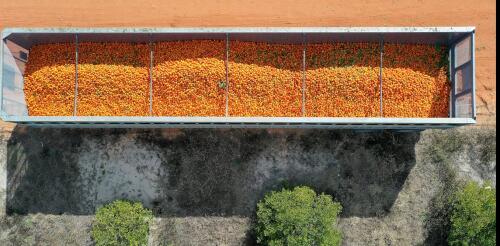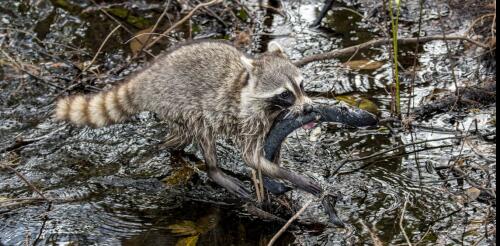Quick reads
The Southern Ocean encircling Antarctica is the world’s largest feeding ground for baleen whales – species like humpbacks that filter tiny organisms from seawater for food. In the 20th century, whalers killed roughly 2 million large whales in the Southern Ocean. Some populations, like the Antarctic blue whale, were reduced by more than 99% and have been struggling to recover, even though most nations ended commercial whaling in the mid-1980s. Today a new threat is emerging: industrial fishing for Antarctic krill – tiny swimming crustaceans, roughly 2 inches (60 millimeters) long. In a newly published study, colleagues and I found that competition with this burgeoning fishery may impede whales’ recovery. I first learned about this issue in early 2022, when a colleague working aboard a cruise ship told me that he had seen approximately 1,000 fin whales feeding on krill near the South Orkney Islands, just north of Antarctica. This was probably the largest a...
Citrus trees showing natural tolerance to citrus greening disease host bacteria that produce novel antimicrobials that can be used to fight off the disease, our recent study shows. We found the trees at an organic farm in Clermont, Florida. Citrus greening disease – known more formally as Huanglongbing, or HLB, is caused by the bacterium Candidatus Liberibacter asiaticus. It is spread by an insect called the Asian citrus psyllid. There is no known cure for the disease. We are Florida-based researchers who study sustainable farming practices, a discipline also known as agroecology. Our team has isolated these antimicrobial compounds in the lab and is now working to test them with the goal of producing an effective treatment for HLB. Why it matters HLB has dealt a massive blow to Florida’s iconic citrus industry. Since citrus greening disease was first detected in the state in 2005, Florida citrus production is down by more than 92%. The disease is just one factor....
Wetlands are areas of land that are covered by water, or have flooded or waterlogged soils. They can have water on them either permanently or for just part of the year. Whether it’s year-round or seasonal, this period of water saturation produces hydric soils, which contain little or no oxygen. But this doesn’t mean that they are lifeless: Wetlands are full of unique water-loving plants and wildlife that have adapted to wet environments. Wetlands can take many different forms, depending on the local climate, water conditions and land forms and features. For example, swamps are dominated by woody trees or shrubs. Marshes often have more grasslike plants, such as cattails and bulrushes. Bogs and fens are areas that accumulate peat – deposits of dead and partly decomposed plant materials that form organic-rich soil. Trillions of dollars in ecological benefits Wetlands are important environments for many reasons. They provide ecological services whose value has...
Long-term high ultrafine particle concentrations in New York state neighborhoods are linked to higher numbers of deaths. That is the key finding of our new research, published in the Journal of Hazardous Materials. Our study shows that high levels of ultrafine particles in the atmosphere over long periods of time are significantly associated with increased non-accidental deaths, particularly from cardiovascular and respiratory diseases. Ultrafine particles are aerosols less than 0.1 micrometers, or 100 nanometers, in diameter — about one-thousandth the width of a human hair. Due to their tiny size, they can be easily inhaled into the distal branches of lungs, quickly absorbed into the bloodstream and even pass through organ barriers. We also found that certain underserved populations, including Hispanics, non-Hispanic Black people, children under 5, older adults and non-New York City residents, are more susceptible to the adverse effects of ultrafine particles. The dis...


